Find Help
More Items From Ergsy search
-

Pressure ulcer prevention: A guide for patients, carers and healthcare professionals
Relevance: 100%
-
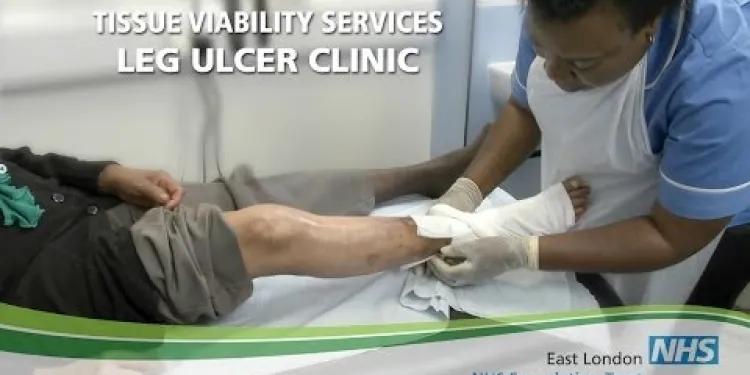
Leg ulcer see Venous leg ulcer
Relevance: 76%
-
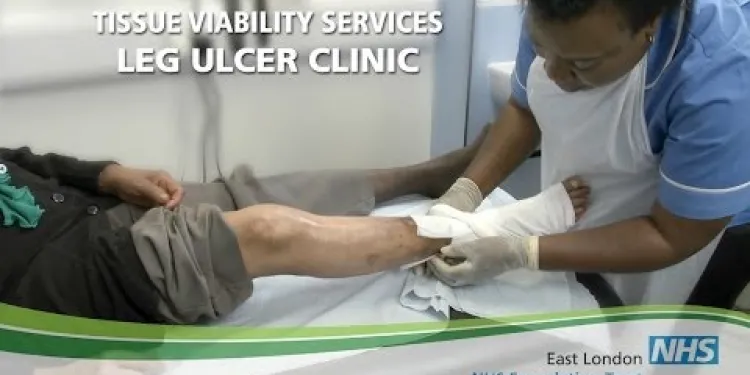
Leg Ulcers
Relevance: 71%
-

Can high blood pressure be prevented?
Relevance: 56%
-
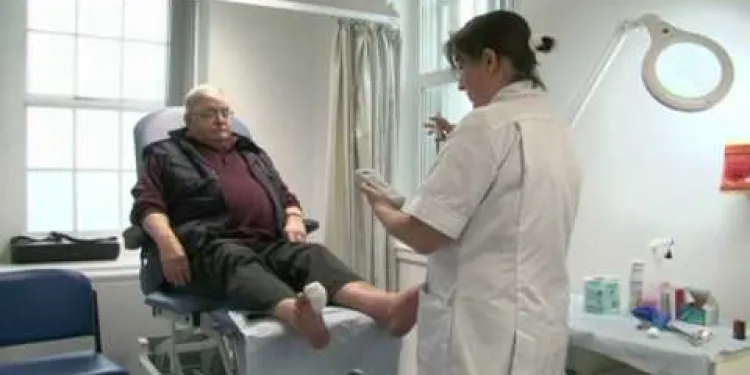
Diabetes Care - Preventing Amputations
Relevance: 40%
-

What is high blood pressure?
Relevance: 38%
-

Are there any self-tests for eye pressure?
Relevance: 37%
-

What causes high blood pressure?
Relevance: 37%
-

What are the risks of having high blood pressure?
Relevance: 36%
-

Seven Reaasons For Measuring blood pressure
Relevance: 36%
-

How is high blood pressure diagnosed?
Relevance: 36%
-

What is the role of potassium in managing blood pressure?
Relevance: 35%
-

How do medications help control high blood pressure?
Relevance: 35%
-

Why is high blood pressure called a 'silent killer'?
Relevance: 35%
-

How does diet affect blood pressure?
Relevance: 34%
-

Does caffeine affect blood pressure?
Relevance: 34%
-

How can high blood pressure be treated?
Relevance: 34%
-
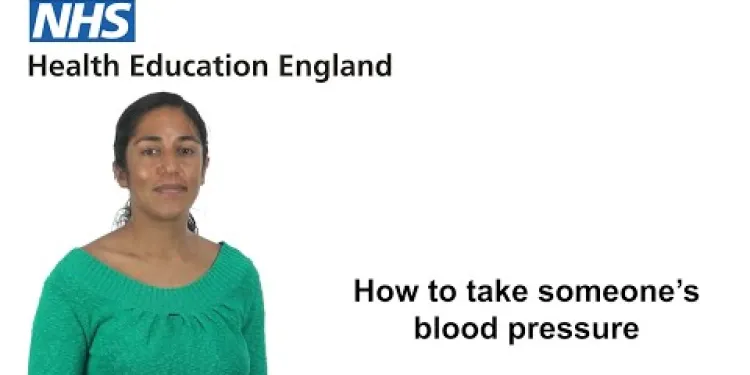
How to take someone's blood pressure
Relevance: 33%
-
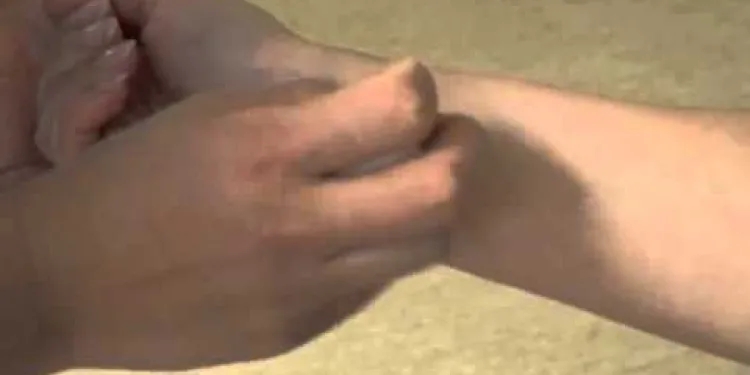
Using pressure points to relieve nausea
Relevance: 33%
-

Is it possible to prevent a heart attack?
Relevance: 33%
-

Is it safe to take blood pressure medication with coffee?
Relevance: 33%
-

Can heart failure be prevented?
Relevance: 33%
-

Can stress cause high blood pressure?
Relevance: 33%
-

What is the role of peer pressure in binge drinking?
Relevance: 32%
-

How often should I check my blood pressure?
Relevance: 32%
-

How does caffeine affect blood pressure?
Relevance: 32%
-

Is aspirin recommended for everyone to prevent colorectal cancer?
Relevance: 32%
-

What lifestyle changes can lower blood pressure?
Relevance: 32%
-
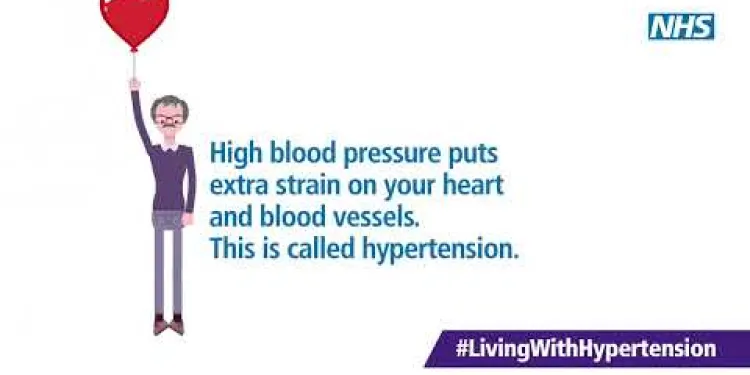
Blood pressure too high? Living with hypertension animation
Relevance: 32%
-

Can decaffeinated coffee affect blood pressure?
Relevance: 32%
-

How can one minimize the impact of coffee on blood pressure?
Relevance: 32%
-

What should I do if I'm considering aspirin for cancer prevention?
Relevance: 31%
-

Is using a pressure washer allowed during a hosepipe ban?
Relevance: 30%
-

Can high blood pressure lead to other health problems?
Relevance: 30%
-

Can weight loss help reduce high blood pressure?
Relevance: 30%
-
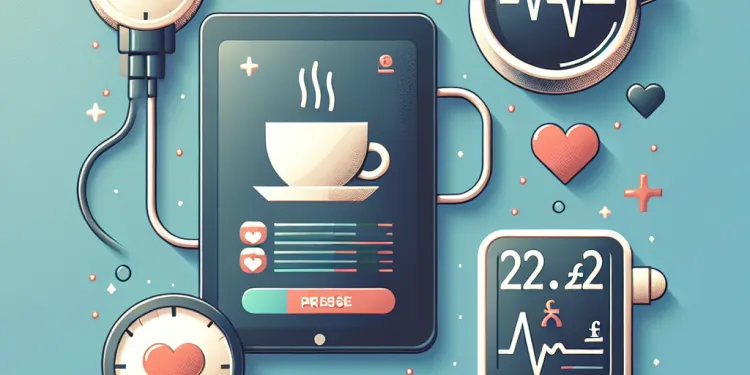
Are there any other factors in coffee that may affect blood pressure?
Relevance: 30%
-

Should people with high blood pressure avoid coffee entirely?
Relevance: 30%
-

Is Your Morning Coffee a Risk Factor for High Blood Pressure?
Relevance: 30%
-

Is green tea a better alternative to coffee for blood pressure management?
Relevance: 30%
-

What dosage of aspirin is considered effective for cancer prevention?
Relevance: 29%
Pressure Ulcer Prevention: A Guide for Patients, Carers, and Healthcare Professionals
Understanding Pressure Ulcers
Pressure ulcers, also known as bedsores or pressure sores, are areas of damaged skin and tissue resulting from prolonged pressure on the skin. They often occur in patients with limited mobility, especially in areas where bones are close to the skin, such as heels, elbows, and the sacrum.
Identification and Risk Factors
It is crucial to regularly inspect the skin for early signs of pressure ulcers, such as redness, swelling, or tenderness. Patients at higher risk include those who are bedridden, use a wheelchair, have a poor diet, or suffer from conditions affecting blood flow.
Effective Prevention Strategies
Preventing pressure ulcers involves multiple strategies:
- Regular Repositioning: Patients should be repositioned at least every 2 hours to alleviate pressure.
- Supportive Surfaces: Use special mattresses and cushions that distribute weight more evenly.
- Skin Care: Keep the skin clean and moisturised, and use barrier creams to protect against moisture.
- Nutrition: Ensure a balanced diet with adequate protein, vitamins, and minerals to promote skin health.
- Hydration: Maintain proper hydration to keep skin supple and resilient.
Role of Carers and Healthcare Professionals
Carers and healthcare professionals play a pivotal role in prevention. They should educate patients and their families about risk factors and preventive measures. Regular training and up-to-date knowledge in pressure ulcer prevention protocols are essential. Documenting patient conditions and adjusting care plans as needed ensures proactive management.
Conclusion
Pressure ulcer prevention requires a collaborative effort between patients, carers, and healthcare professionals. By understanding risk factors, regularly monitoring skin conditions, and implementing effective prevention strategies, the incidence of pressure ulcers can be significantly reduced, promoting better health outcomes for at-risk individuals in the United Kingdom.
Pressure Ulcer Prevention: A Guide for Patients, Carers, and Healthcare Professionals
Understanding Pressure Ulcers
Pressure ulcers are sores on the skin. They happen when someone stays in one position for too long. This can hurt the skin where bones are close, like heels and elbows.
Identification and Risk Factors
Check the skin often for redness, swelling, or pain. People who cannot move much, who stay in bed or a wheelchair, or have poor diets are more at risk.
Effective Prevention Strategies
Here are ways to stop pressure ulcers:
- Regular Repositioning: Move the person every 2 hours.
- Supportive Surfaces: Use special mattresses and cushions to spread weight evenly.
- Skin Care: Keep skin clean and soft. Use creams to protect the skin.
- Nutrition: Eat a balanced diet with enough protein, vitamins, and minerals.
- Hydration: Drink plenty of water to keep skin healthy.
Role of Carers and Healthcare Professionals
Carers and healthcare professionals help stop ulcers. They teach families about risks and how to prevent them. They also keep patient records and update care plans. Training is important.
Conclusion
Preventing pressure ulcers needs everyone to work together. By knowing the risks and checking skin often, we can help stop these sores and keep people healthy in the UK.
Frequently Asked Questions
What is a pressure ulcer?
A pressure ulcer, also known as a bed sore or pressure sore, is an injury to the skin and underlying tissue, primarily caused by prolonged pressure on the skin.
Who is at risk of developing pressure ulcers?
People who are immobile, have limited mobility, or are confined to a bed or wheelchair are most at risk. Elderly individuals, those with poor nutrition, and individuals with conditions like diabetes are also at higher risk.
How can pressure ulcers be prevented?
Prevention strategies include regularly changing positions, using pressure-relieving devices, maintaining good nutrition, and keeping the skin clean and dry.
How often should a person be repositioned to prevent pressure ulcers?
It is generally recommended to reposition at least every 2 hours for individuals in bed and every 15-30 minutes for those in a wheelchair.
What are the early signs of a pressure ulcer?
Early signs include redness, warmth, and pain in the affected area. The skin may also feel firmer or softer than the surrounding tissue.
What should I do if I suspect a pressure ulcer is developing?
If you suspect a pressure ulcer, seek advice from a healthcare professional immediately to receive appropriate treatment and prevent further damage.
Can pressure ulcers be treated at home?
Mild pressure ulcers can often be managed at home with proper care, but it's essential to seek advice from a healthcare professional. Severe or infected ulcers may require more intensive medical treatment.
What role does nutrition play in preventing pressure ulcers?
Good nutrition is crucial for maintaining healthy skin and aiding in the healing process. A balanced diet with adequate protein, vitamins, and minerals can help prevent pressure ulcers.
Are there any specific products that can help prevent pressure ulcers?
There are various pressure-relieving products such as special mattresses, cushions, and pads designed to reduce pressure on vulnerable areas.
Is it common to develop pressure ulcers in hospitals?
Hospitals take many precautions to prevent pressure ulcers, but they can still occur, especially in patients who are critically ill or immobile.
How are pressure ulcers classified?
Pressure ulcers are classified into four stages based on their severity, ranging from Stage 1 (red, unbroken skin) to Stage 4 (deep injury involving muscle and bone).
Can pressure ulcers lead to other health complications?
Yes, if not properly managed, pressure ulcers can lead to serious complications such as infections, sepsis, and extended hospital stays.
What is the role of carers in preventing pressure ulcers?
Carers play a vital role by helping with repositioning, ensuring cleanliness, providing proper nutrition, and monitoring skin condition regularly.
Are pressure ulcers painful?
Yes, pressure ulcers can be quite painful, especially as they progress. Pain management is an important aspect of treatment.
Is there any government or NHS support available for pressure ulcer prevention?
Yes, the NHS provides guidelines, resources, and support for pressure ulcer prevention. Patients and carers can also access community services and healthcare professionals for assistance.
What is a pressure ulcer?
A pressure ulcer is a sore on the skin. It happens when you sit or lie in one position for too long. Your skin gets damaged because it is pressed too hard. This can be painful.
If you think you have a pressure ulcer, tell a doctor or nurse. They can help you make it better.
You can use a soft cushion to sit on and change your position often to help stop pressure ulcers.
A pressure ulcer is also called a bed sore or pressure sore. It is a hurt on the skin and the tissue underneath. This happens when the skin has pressure on it for a long time.
Who can get pressure sores?
Some people can't move much or stay in bed or a wheelchair. These people have a higher chance of getting sores. Older people, people who don't eat well, and those with diabetes are also at risk.
Here are some ways to help:
- Change positions often to avoid pressure on one spot.
- Eat healthy foods to keep skin strong.
- Check skin every day for any red spots or sores.
- Use pillows or special cushions to stay comfortable.
- Ask a carer or nurse for help with moving and skin care.
How can we stop pressure ulcers?
Pressure ulcers are sores on your skin. They happen when you stay in one position too long. Here are some easy tips to help stop them:
- Move your body: Change your position often. Try to move every hour.
- Use soft cushions: You can use soft pads or cushions to help keep your skin safe.
- Keep skin clean: Wash your skin gently to keep it healthy.
- Eat healthy foods: Good food helps your body stay strong and heal.
- Check your skin: Look for redness or sore spots. Ask for help if you see any.
If you need help, ask someone you trust or talk to your doctor.
To stop problems, try to do these things:
- Move and change how you sit or lie down often.
- Use special cushions or mattresses to take pressure off your skin.
- Eat healthy food to keep your body strong.
- Make sure your skin is clean and dry.
These ideas can help keep your skin safe.
How often should you move to stop sores?
When someone is in bed, it is good to move their position every 2 hours.
When someone is in a wheelchair, it is good to change their position every 15-30 minutes.
Using a timer or alarm can help you remember when to move. Also, asking someone you trust for help can make it easier.
What are the first signs of a pressure sore?
Pressure sores, also called bedsores, are injuries to the skin. They happen when you sit or lie in the same position for a long time.
Watch for these early signs:
- Red or dark patches on the skin that do not go away.
- Skin feels warm, hard, or sore in one area.
- The area might feel itchy.
Check your skin every day. Ask a family member or a carer to help if needed.
To prevent sores, change positions often. Try to move at least every 2 hours. Use soft cushions or pillows for support.
Look for early signs like red skin, feeling warm, and feeling pain where it hurts. The skin might also feel harder or softer than the skin around it.
Here are some tips that might help:
- Use a magnifying glass to see smaller details.
- Ask a friend or family member to help check your skin.
- Take pictures to compare how your skin looks over time.
What should I do if I think a pressure sore is starting?
If you think you or someone else has a pressure sore, here are some steps to take:
- Tell a nurse or doctor as soon as you can.
- Try not to put any more pressure on the sore area.
- Keep the sore area clean and dry.
- If you have a special cushion or mattress, use it to help.
It is important to get help quickly to stop it from getting worse.
If you think someone has a sore from pressure, talk to a doctor or nurse right away. They can help you and stop it from getting worse.
Can bedsores be fixed at home?
Bedsores are also called pressure ulcers. They are sore spots on the skin. These can happen if someone sits or lies in one place for a long time.
You can try to help bedsores at home, but sometimes they need a doctor.
Here are some ways to help at home:
- Keep the sore clean and dry.
- Change positions often to take the pressure off.
- Use soft cushions or pads to protect the sore.
- Eat healthy food to help the skin heal.
If the sore looks very red, swollen, or has a bad smell, tell a doctor. They can help more.
Tools that can help:
- Special seat cushions or mattresses to reduce pressure.
- Creams or bandages to protect the skin.
You can take care of mild pressure sores at home. It is important to talk to a doctor or nurse to make sure you are doing it right. If the sores are very bad or have an infection, a doctor will need to help.
How does food help stop pressure sores?
Eating healthy food is very important for keeping your skin nice and helping it heal when hurt. Eating a mix of foods with enough protein, vitamins, and minerals can stop sores from forming on the skin.
Can special products help stop pressure sores?
There are different things like special beds, cushions, and pads that help keep your body comfortable. They stop pressure on areas that might hurt.
Do people often get pressure sores in hospitals?
Hospitals try very hard to stop bedsores, but sometimes people still get them. This can happen to patients who are very sick or can't move.
What are the types of pressure ulcers?
Pressure ulcers are sores on the skin. They happen when you sit or lie in one position for too long.
Doctors put pressure ulcers into different groups. These groups help doctors know how bad the sore is.
- Stage 1: The skin is red. It does not turn white when you press it. The skin might hurt or feel warm.
- Stage 2: There is a blister or an open sore. The skin might look shiny or wet.
- Stage 3: The sore is deeper. It looks like a small hole in the skin.
- Stage 4: The sore is very deep. It may reach the muscle or bone.
Ask a doctor or nurse for help if you think you have a pressure ulcer.
Use a soft cushion or mattress to help protect your skin. Move or change your position often.
Pressure sores are sore spots on the skin. Doctors use stages to talk about how bad they are. There are four stages:
Stage 1: The skin looks red but is not broken.
Stage 2: The sore is open and may look like a blister.
Stage 3: The sore is deeper and affects more layers of skin.
Stage 4: The sore is very deep and can reach the muscle and bone.
To understand this better, people can use simple pictures or ask someone to explain it using easy words.
Can bedsores cause more health problems?
Bedsores are also called pressure ulcers. They are sores on the skin.
Yes, bedsores can cause more health problems. This means that if someone has a bedsore, they might get even sicker.
Here are some problems bedsores can cause:
- Infection: The sore can get germs in it and make the person sick.
- Pain: Bedsores can hurt a lot.
- Longer healing: It might take a long time to get better.
If someone has a bedsore, they should see a doctor. Using soft pillows and turning in bed often can help, too!
Yes, if not taken care of, pressure sores can cause big problems. These problems can be infections, a blood infection called sepsis, and staying in the hospital for a long time.
What do carers do to stop pressure sores?
Carers help people stay healthy.
A pressure sore is a skin problem.
Carers move people to stop sores.
They help clean and check the skin.
Carers use cushions and special beds.
These stop sores from happening.
Pillows and soft pads are helpful tools.
Carers know the right way to help.
Carers have an important job. They help people move around, make sure they stay clean, give them good food, and check their skin to keep it healthy.
Do pressure ulcers hurt?
Yes, bedsores can hurt a lot, especially if they get worse. It is very important to help manage the pain.
Can the government or NHS help me stop pressure sores?
Pressure sores are also called bedsores. They happen when you sit or lie in one position for too long. The government and NHS can help you. Talk to your doctor or nurse. They can give you advice and support. You can also ask about special cushions or mattresses to stop sores. Remember, moving and changing positions often can help a lot.
Yes, the NHS has rules and help for stopping pressure sores. People and carers can also talk to local services and healthcare workers for help.
Useful Links
- Ergsy carfully checks the information in the videos we provide here.
- Videos shown by Youtube after a video has completed, have NOT been reviewed by ERGSY.
- To view, click the arrow in centre of video.
- Most of the videos you find here will have subtitles and/or closed captions available.
- You may need to turn these on, and choose your preferred language.
- Go to the video you'd like to watch.
- If closed captions (CC) are available, settings will be visible on the bottom right of the video player.
- To turn on Captions, click settings .
- To turn off Captions, click settings again.
More Items From Ergsy search
-

Pressure ulcer prevention: A guide for patients, carers and healthcare professionals
Relevance: 100%
-

Leg ulcer see Venous leg ulcer
Relevance: 76%
-

Leg Ulcers
Relevance: 71%
-

Can high blood pressure be prevented?
Relevance: 56%
-

Diabetes Care - Preventing Amputations
Relevance: 40%
-

What is high blood pressure?
Relevance: 38%
-

Are there any self-tests for eye pressure?
Relevance: 37%
-

What causes high blood pressure?
Relevance: 37%
-

What are the risks of having high blood pressure?
Relevance: 36%
-

Seven Reaasons For Measuring blood pressure
Relevance: 36%
-

How is high blood pressure diagnosed?
Relevance: 36%
-

What is the role of potassium in managing blood pressure?
Relevance: 35%
-

How do medications help control high blood pressure?
Relevance: 35%
-

Why is high blood pressure called a 'silent killer'?
Relevance: 35%
-

How does diet affect blood pressure?
Relevance: 34%
-

Does caffeine affect blood pressure?
Relevance: 34%
-

How can high blood pressure be treated?
Relevance: 34%
-

How to take someone's blood pressure
Relevance: 33%
-

Using pressure points to relieve nausea
Relevance: 33%
-

Is it possible to prevent a heart attack?
Relevance: 33%
-

Is it safe to take blood pressure medication with coffee?
Relevance: 33%
-

Can heart failure be prevented?
Relevance: 33%
-

Can stress cause high blood pressure?
Relevance: 33%
-

What is the role of peer pressure in binge drinking?
Relevance: 32%
-

How often should I check my blood pressure?
Relevance: 32%
-

How does caffeine affect blood pressure?
Relevance: 32%
-

Is aspirin recommended for everyone to prevent colorectal cancer?
Relevance: 32%
-

What lifestyle changes can lower blood pressure?
Relevance: 32%
-

Blood pressure too high? Living with hypertension animation
Relevance: 32%
-

Can decaffeinated coffee affect blood pressure?
Relevance: 32%
-

How can one minimize the impact of coffee on blood pressure?
Relevance: 32%
-

What should I do if I'm considering aspirin for cancer prevention?
Relevance: 31%
-

Is using a pressure washer allowed during a hosepipe ban?
Relevance: 30%
-

Can high blood pressure lead to other health problems?
Relevance: 30%
-

Can weight loss help reduce high blood pressure?
Relevance: 30%
-

Are there any other factors in coffee that may affect blood pressure?
Relevance: 30%
-

Should people with high blood pressure avoid coffee entirely?
Relevance: 30%
-

Is Your Morning Coffee a Risk Factor for High Blood Pressure?
Relevance: 30%
-

Is green tea a better alternative to coffee for blood pressure management?
Relevance: 30%
-

What dosage of aspirin is considered effective for cancer prevention?
Relevance: 29%


